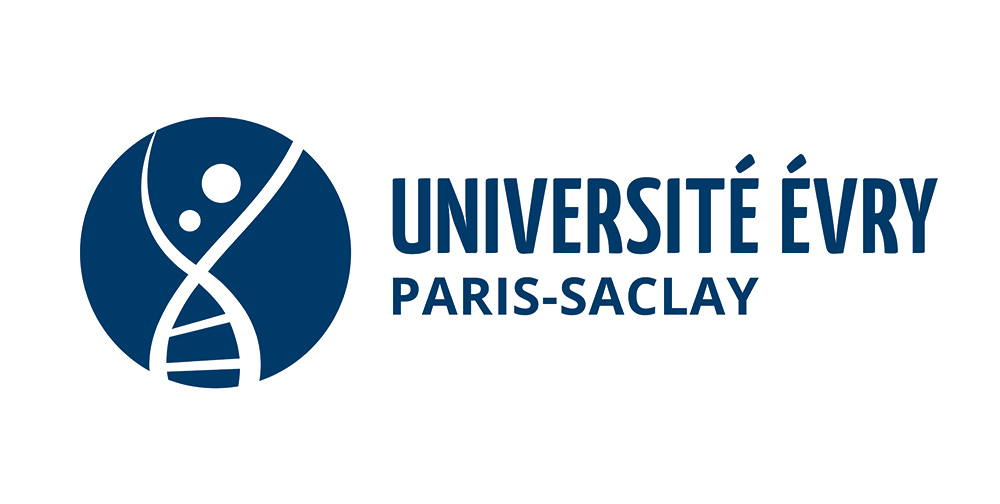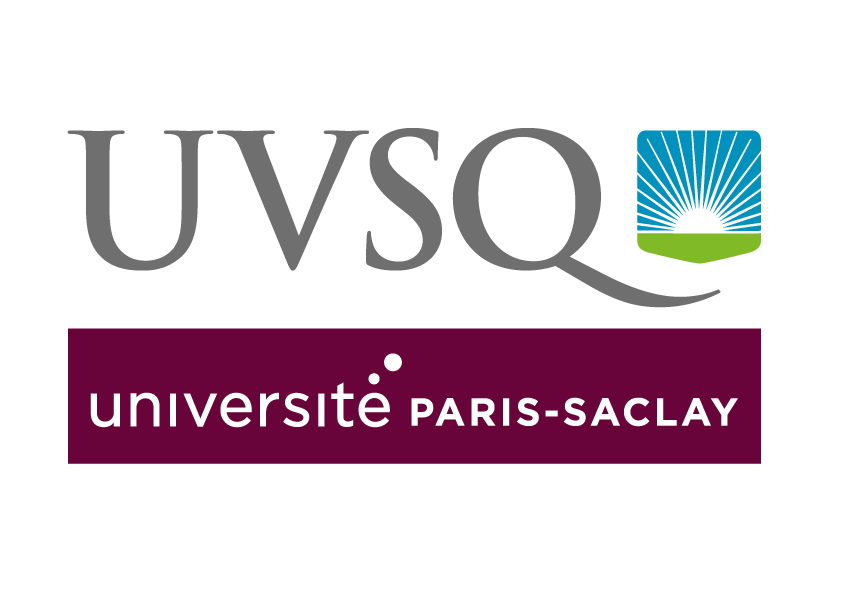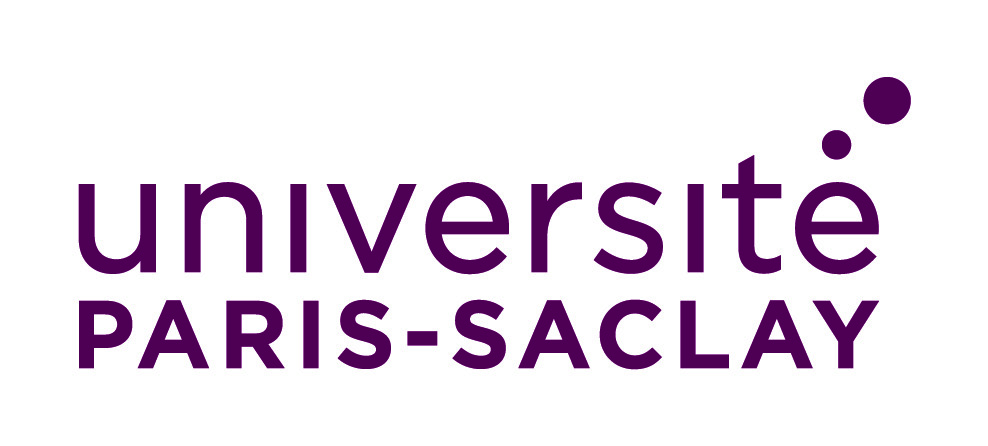Laboratory Partners


GABI: Animal Genetics and Integrative Biology
AgroParisTech, INRAE, Université Paris-Saclay
GABI's scientific orientations aim to understand and exploit the genetic variability of animals to analyze the construction of phenotypes, interactions with microbial ecosystems and the environment at large, in a context of agroecological transition. The unit draws on a wide range of skills, from the acquisition of new knowledge to methodological innovation and transfer to the field: quantitative, molecular and population genetics; functional genomics; biostatistics; bioinformatics; fundamental biology; experimentation on model and farm animals; mouse transgenesis; immunophenotyping; study of microbiomes and their metagenomes; integrative approaches to the study of multi-level and multi-scale data.
GQE-Le Moulon: Quantitative Genetics and Evolution
AgroParisTech, CNRS, INRAE, Université Paris-Saclay
UMR Génétique Quantitative et Évolution-Le Moulon is a founding member of IDEEV (Institut Diversité, Écologie et Évolution du Vivant). It brings together researchers from several research and higher education establishments: INRAE (UMR0320), Université Paris-Saclay , CNRS (UMR8120) and AgroParisTech . GQE-Le Moulon works on theoretical and applied aspects of evolution and quantitative genetics in plants and yeasts. It is a major training center in these fields.
MIA Paris-Saclay: Applied Mathematics and Computer Science
AgroParisTech, INRAE, Université Paris-Saclay
MIA Paris-Saclay, associated with AgroParisTech, INRAE and Paris-Saclay University, brings together statisticians and computer scientists specializing in statistical and computational modeling and learning for biology, ecology, the environment, agronomy and agri-food. Their skills cover statistical inference methods (complex models, latent variable models, Bayesian inference, learning, model selection, etc.), and algorithmic methods (generalization, domain transfer, knowledge representation).
PSAE: Paris-Saclay Applied Economics
AgroParisTech, INRAE, Université Paris-Saclay
Created on January 1, 2022 from the merger of the ALISS and Public Economics units, the UMR Paris-Saclay AppliedEconomics (PSAE) aims to cover a thematic field comparable to that found in Agricultural and Resource Economics departments in the USA (agriculture, food, environment), to position itself as a major player in applied economics within the Université Paris-Saclay, and to strengthen its disciplinary anchorage around quantitative methods.
SayFood: Paris-Saclay Food and Bioproduct Engineering
AgroParisTech, INRAE, Université Paris-Saclay
The SayFood (Paris-Saclay Food & Bioproduct Engineering) research unit was created on January 1, 2020 from the merger of UMR GENIAL (Ingénierie Procédés Aliments) and GMPA (Génie et microbiologie des procédés alimentaires). Its mission is to propose new approaches to product and process engineering, and to acquire original knowledge to contribute to the development of new sustainable food systems, by working interdisciplinarily along the design-consumption continuum.

CNRGH: National Center for Research in Human Genomics - DRF/JACOB
CEA, Université Paris-Saclay
The CNRGH is France's national research center dedicated to answering scientific questions requiring high-throughput sequencing and genotyping needs through the development and implementation of innovative (biological, bioinformatic, and statistical) and integrated technologies, by carrying out collaborative projects and its own projects. The CNRGH's organization optimizes research in human disease genetics and genomics by creating the essential links between cohort formation (DNA, RNA, etc. samples), the identification of responsible genes and/or biomarkers, the study of the transcriptome and epigenome, and functional genomics approaches.
I2BC: Institute for Integrative Cell Biology
CEA, CNRS, INRAE, INSERM, Université Paris-Saclay
The I2BC's research falls into four main cross-disciplinary research areas, based on the unit's multidisciplinary approach. For each of these, three scientists from different disciplines provide scientific leadership: architecture and dynamics of cellular structures and associated pathologies, genetic information processing and dysfunctions, host-microbe interactions: infectious diseases and symbioses, and bio-inspired engineering for energy, health and the environment.
IPhT: Institute of Theoretical Physics
CEA, CNRS, Université Paris-Saclay
The IPhT's research covers almost all major topics in modern theoretical physics: high-energy physics, cosmology, quantum gravity, string theory, exact methods and mathematical physics, condensed matter physics and quantum physics, statistical physics and non-equilibrium systems, and biological systems.
IRFU: Institute for Research on the Fundamental Laws of the Universe
CEA, Université Paris-Saclay
IRFU, the Institute for Research into the Fundamental Laws of the Universe, is part of CEA's Fundamental Research Division (DRF), and brings together three scientific disciplines - astrophysics, nuclear physics and particle physics - as well as all associated technological expertise. It is positioned to answer the main questions raised in the understanding of the four fundamental interactions, on different scales, from the smallest (elementary constituents of matter, nuclear matter) to the largest (energy content and structuring of the Universe).
LIST: Systems and Technology Integration Laboratory
CEA, Université Paris-Saclay
Located in Paris-Saclay and Grenoble, CEA-LIST is one of the three institutes of CEA's Technological Research Division. Experts in the field of intelligent digital systems, they support the competitiveness of companies by transferring technology and innovations to industry. They draw on the skills of some 1,000 researcher-engineers and technicians, and on a portfolio of technological building blocks protected by patents.
LSCE: Laboratory for Climate and Environmental Sciences
CEA, CNRS, Université Paris-Saclay, Versailles Saint-Quentin-en-Yvelines University
Since January 2015, LSCE has been organized into three scientific themes: Archives and Tracers; Biogeochemical Cycles and Transfers in the Environment; Climate and Cycles - Modeling their variability and interactions.
MdlS: Simulation Center
CEA, CNRS, Université Paris-Saclay, Versailles Saint-Quentin-en-Yvelines University
The Maison de la Simulation is a joint laboratory of the CEA, CNRS, Paris-Saclay University, and Versailles Saint-Quentin University. It specializes in high-performance computing and numerical simulations closely linked to physical applications, parallel software engineering, programming models, visualization techniques, artificial intelligence, and quantum computing.
NeuroPSI: Paris-Saclay Neuroscience Institute
CEA, CNRS, Inserm, Université Paris-Saclay
NeuroPSI's scientific project is based on a multidisciplinary, multi-scale approach to the nervous system. The main objective is to understand the anatomical organization and operating principles of the neural circuits that control behavior in response to the environment. They use a variety of animal models and combine experimental and theoretical approaches to understand how different types of neural architectures generate behavior.
NeuroSpin
CEA
NeuroSpin, directed by Cyril Poupon, is a research center for innovation in brain imaging located on the CEA Paris-Saclay site. At NeuroSpin, physicists, mathematicians, neuroscientists, and physicians work together to develop tools and models that will lead to a better understanding of how the normal and pathological brain functions, before and after treatment. Focusing on neuroimaging, the research conducted ranges from technological and methodological developments (data acquisition and processing) to preclinical and clinical neuroscience, including cognitive neuroscience.

CVN: Center for Digital Vision
CentraleSupélec, Inria, Université Paris-Saclay
Created in 2011, the CVN stands at the intersection of mathematics and computer science, in search of mathematical models and their computational solutions for the automatic structuring, interpretation and understanding of massive (visual) data, with a focus on machine learning, computer vision and discrete models in biomedical image analysis.
GeePs: Electrical and Electronic Engineering Paris
CentraleSupélec, CNRS, Université Paris-Saclay, Sorbonne Université
The laboratory, co-supervised by CentraleSupélec, UPMC, UPSud and CNRS, focuses on information and energy applications.
L2S: Signals and Systems Laboratory
CentraleSupélec, CNRS, Inria, Université Paris-Saclay
The areas of interest of the Signals and Systems Laboratory cover several scientific disciplines: the fundamental aspects and fields of application of mathematics, which have enabled the development of signal processing, information theory, cryptology and digital technology; physics, which develops theories using mathematical tools to describe and predict the evolution of systems, and which is at the origin of the theory of electromagnetism.
LGI: Industrial Engineering Laboratory
CentraleSupélec, Université Paris-Saclay
The Industrial Engineering Laboratory (LGI) is one of 16 research units at CentraleSupélec, a member of the Université Paris-Saclay. It studies production, activity and socio-technical systems throughout their life cycle. These systems are designed by man and must be observed, diagnosed, operated, regulated, maintained and recycled. It comprises 83 people divided into 4 research groups. It is also organized around 5 themes to showcase and encourage cross-disciplinary and inter-group collaborative activities. These themes are each steered by a duo of academics. Finally, the LGI's third organizational stratum is its set of 7 corporate-supported research chairs.
LMF : Formal Methods Laboratory
CentraleSupélec, CNRS, ENS Paris-Saclay, Inria, Université Paris-Saclay
The ambition of the Formal Methods Laboratory (LMF) is to shed light on the "digital world" through mathematical logic, using formal methods as a tool for analysis, modeling and reasoning for computer programs, security protocols and more. It draws on computational paradigms ranging from the most classical to the most innovative, such as quantum computing.
LMPS: Paris-Saclay Mechanics Laboratory
CentraleSupélec, CNRS, ENS Paris-Saclay, Université Paris-Saclay
Comprising almost 220 staff, this new research unit, dedicated to experimentation, modeling and simulation in solid mechanics, aims to contribute to meeting challenges in the strategic fields of clean, safe and efficient energy development, sober resource management and adaptation to climate change, sustainable transport and urban systems, reliability of complex systems and industrial renewal.
MICS: Mathematics and Computer Science for Complex Systems Laboratory
CentraleSupélec, Inria, Université Paris-Saclay
Created in the early 2000s, MICS brings together CentraleSupélec's research in mathematics and computer science. At the heart of digital technologies, its themes concern the modeling, simulation, analysis and optimization of complex systems, whether from the world of industry, life, markets or information and networks.
SONDRA
CentraleSupélec, ONERA, Université Paris-Saclay
The SONDRA laboratory was born of the alliance of 4 organizations that were already linked by independent collaborations. Its acronym is a contraction of Supélec, ONERA, Nus DSO Research Alliance and represents the union between Singapore and France around fundamental research activities in the fields of electromagnetism and signal processing applied to radar.
.svg.png)
C2N: Center for Nanosciences and Nanotechnologies
CNRS, Université Paris-Saclay
The Centre de nanosciences et de nanotechnologies - C2N (CNRS/Université Paris-Sud - Université Paris-Saclay), was created on June 1, 2016 from the merger of two Paris Region laboratories that are leaders in their field: the Laboratoire de photonique et de nanostructures (CNRS) and the Institut d'électronique fondamentale (CNRS/Université Paris-Sud).
Charles Fabry Laboratory
CNRS, IOGS, Université Paris-Saclay
The Charles Fabry Laboratory is a joint research unit of the Institut d'Optique Graduate School, CNRS and Paris-Saclay University. It is the historical pillar of research at the Institut d'Optique Graduate School. The laboratory's research covers a broad spectrum of optics-photonics and its applications.
IJCLab: Irène and Frédéric Joliot-Curie 2 Infinity Laboratory
CNRS, Université Paris-Saclay, Université Paris Cité
The Laboratoire de Physique des 2 Infinis Irène Joliot-Curie, or IJCLab, is a joint research unit of the CNRS, Université Paris Saclay and Université Paris-Cité, located on the Orsay Faculty of Science campus. The laboratory is the result of the merger of five laboratories (CSNSM, IMNC, IPNO, LAL and LPT) that are geographically and thematically close to each other on the Orsay campus. These laboratories share a common history, linked to the creation and development of the Orsay Campus.
ISMO: Orsay Institute of Molecular Sciences
CNRS, Université Paris-Saclay
ISMO's ambition is to become a center of excellence in its three main scientific fields: molecular physics and its applications, nanoscience, and physics for biology, based on two common approaches: photophysics (a large part of the light spectrum, from X-rays to the infrared, is used to probe the dynamics induced by the optical excitation of the systems under study) and imaging: optical and local probe. ISMO is at the interface of many fields: astrophysics, atmospheric chemistry, biology, medicine...
ISP: Institute of Social Sciences of Politics
CNRS, ENS Paris-Saclay, Université Paris-Saclay, Université Paris-Nanterre
The Institut des Sciences Sociales du Politique (ISP) is a CNRS joint research unit (UMR no. 7220) located on the campuses of Université Paris Nanterre and École normale supérieure Paris-Saclay (formerly ENS Cachan). As part of the Institut des sciences humaines et sociales of the CNRS, ISP reports to sections 40 (Politique, pouvoir, organisation), principal, 36 (Sociologie et sciences du droit) and 33 (Mondes modernes et contemporains), secondary, of the Comité national de la recherche scientifique.
LMO: Orsay Mathematics Laboratory
CNRS, Inria, Université Paris-Saclay
The research topics covered by the LMO range from the most fundamental to the most applied mathematics. Researchers are divided into 5 research teams: Harmonic Analysis, Numerical Analysis and Partial Differential Equations, Arithmetic and Algebraic Geometry, Probability and Statistics, Topology, Geometry and Dynamics.
LPS: Solid State Physics Laboratory
CNRS, Université Paris-Saclay
Research activity is organized around three main areas, each involving roughly the same number of scientists: new electronic states of matter, physical phenomena in reduced dimensions and soft matter and the physics-biology interface.
LPTMS: Laboratory of Theoretical Physics and Statistical Models
CNRS, Université Paris-Saclay
The Theoretical Physics and Statistical Models Laboratory (LPTMS) is distinguished by its thematic focus on condensed matter and quantum fluids, statistical physics and integrable systems, as well as disordered systems, soft matter and the physics/biology interface. Its research has a wide range of applications, including biology, theoretical computing and economics.
UMPhy: CNRS/Thalès Joint Physics Unit
CNRS, Université Paris-Saclay
The creation of UMPhy is the fruit of a long collaboration between Albert Fert's team at Université Paris-Sud and Alain Friederich's physics group at Thomson-CSF's central research laboratory. This fruitful collaboration, initially focused on magnetic metal multilayers, led to the discovery of the giant magnetoresistance (GMR) effect in 1988. Initially focused on spintronics and nanomagnetism, UMPhy's scientific activities were extended to high-temperature superconductors (HTS) in 1996. More recently, in response to renewed interest in oxide physics, a research line on functional oxides has been launched. Since 2006, UMPhy has also been home to the X-ray lithography group.

CB : Centre Borelli
ENS Paris-Saclay, CNRS, INSERM, SSA, Université Paris Cité
The Centre Borelli is a joint research unit (UMR 9010) bringing together researchers in mathematics, computer science and neuroscience, with a strong commitment to interfaces with the biomedical field and industrial transfer. The Centre Borelli is an interdisciplinary research laboratory in the fields of mathematics at interfaces and integrative and behavioral neuroscience.
CEPS: Center for Economics
ENS Paris-Saclay, Université Paris-Saclay
The CMLA brings together interdisciplinary teams of mathematicians and experts in physics, mechanics, biology and engineering, contributing to research projects driven by real data and use cases from science and industry.
LURPA: Automated Production Research Laboratory
ENS Paris-Saclay, Université Paris-Saclay
LURPA conducts research into product design, manufacturing processes and safe control of discrete-event systems. LURPA's research focuses on scientific excellence, developing models, methods and tools to address scientific, technological and societal issues. It is based on high-level theoretical developments and validation on experimental platforms (numerical or physical).
SATIE: Laboratory for Information and Energy Technology Systems and Applications
ENS Paris-Saclay, Université Paris-Saclay
SATIE is a joint research unit (UMR CNRS 8029) covering a wide range of topics in electrical engineering: electronics, electrical energy, signal processing. Research focuses on information and energy technology systems and applications.

IFPEN: French Institute of Petroleum Renewable Energies
IFP Energies nouvelles (IFPEN) is a major player in research and training in the fields of energy, transportation, and the environment. From scientific concepts in fundamental research to technological solutions in applied research, technological innovation is at the heart of its activities.

MaIAGE: Applied Mathematics and Computer Science, from the Genome to the Environment
INRAE, Université Paris-Saclay
The MaIAGE research unit brings together mathematicians, computer scientists, bioinformaticians and biologists to address questions of biology and agro-ecology, from the molecular to the landscape scale, including the study of individuals, populations and ecosystems.

Inria Saclay center
Inria
The Inria Saclay center is an essential part of digital science research on the Saclay plateau. It embodies the values and projects that make Inria unique in the research landscape: scientific excellence, technology transfer, and multidisciplinary partnerships with establishments with skills that complement our own, in order to maximize Inria's scientific, economic and societal impact.
CELESTE Team | Interactions between theory, algorithms, and applications
DATASHAPE Team | Understanding the form of data
LIFEWARE Team l Computational systems biology and optimization
MIND Team | Models and inference for neuroimaging data
PETSCRAFT Team l Designing explainable and effective privacy-enhancing technologies
SODA Team | Computational and mathematical methods for understanding society and health from data
TRiBE Team l For an unconventional internet
ILDA: Interacting with Large DAta
Université Paris-Saclay, Inria
The ILDA team's research aims to leverage the richness of these data models to design new interactive systems that best assist users in their tasks of understanding and processing these large amounts of data.

ONERA AI Lab
ONERA
In November 2023, ONERA CEO Bruno Sainjon inaugurated his artificial intelligence laboratory, AILab. A cross-disciplinary laboratory without walls, AILab will federate all of ONERA's AI (artificial intelligence) activities, to optimize its research and its contribution to the benefit of aeronautics, space and defense programs.

IBISC: Computer Science, Bioinformatics and Complex Systems Laboratory
Université Évry Paris-Saclay, Université Paris-Saclay
IBISC (Informatique, Bio-informatique et Systèmes Complexes) EA 4526 is the STIC laboratory of the Université Évry Paris-Saclay, ensuring visibility in this field on the site, responding to the challenges of digital and interdisciplinary research, particularly in Genomics.
LaMME: Evry Mathematics and Modeling Laboratory
Université Évry Paris-Saclay, CNRS, INRAE, Université Paris-Saclay
The Evry Mathematics and Modeling Laboratory (LaMME) is a joint unit of the CNRS (UMR 8071) and the Université Évry Paris-Saclay. Its partners include INRA (MIA department and Mathinfo portal), and the ENSIIE engineering school is currently co-supervisor.
LITEM: Laboratory for Innovation, Technology, Economics, and Management
Université Évry Paris-Saclay, Université Paris-Saclay, IMT Business School
LITEM is a multidisciplinary research center rooted in management sciences and economics. Its goal is to understand the transformations and demands of a complex and uncertain world, and to support economic actors and stakeholders. LITEM's research areas include innovation management, information systems transformation, digital marketing, finance, and responsible management and organizational ethics.
LMEE: Evry Mechanics and Energy Laboratory
Université Évry Paris-Saclay, Université Paris-Saclay
The scientific project of the LMEE, focused on mechanics and thermics, is to understand the physical problems linked to these disciplines and to develop innovative numerical methods and high-performance software, in order to design, model and optimize mechanical and thermal systems in the fields of aeronautics, transport, energy, biomechanics and civil engineering.

BECCOH: Biomarkers and Clinical Trials in Oncology and Hematology Laboratory
UVSQ, AP-HP, Université Paris-Saclay
The research activities of the BECCOH laboratory focus on clinical trials and biomarker development for patients with cutaneous, digestive or pulmonary cancers, or histocytoses. The laboratory's teams have a strong cross-disciplinary focus, in particular on the development and validation of predictive and prognostic biomarkers, enabling ever more precise therapeutic management of patients. The BECCOH laboratory has a histological and molecular pathology platform for the study of neoplasia, and is backed by a biological resource center (CRB) certified by AFNOR to standard NF96-900.
DANTE: Business Law and New Technologies Research Laboratory
UVSQ, Université Paris-Saclay
Founded in 1997, the DANTE research laboratory - Droit des Affaires et Nouvelles TEchnologies - welcomes all lecturers and researchers in private law and criminal sciences from the Faculty of Law and the University of Versailles Saint-Quentin-en-Yvelines.
DAVID: Data and Algorithms for Intelligent and Sustainable Cities
UVSQ, Université Paris-Saclay
The laboratory's scientific project draws on the expertise and interaction of three research teams covering areas of research ranging from data to algorithms: the ADAM team (Ambient Data Access and Mining); the ALMOST team (Algorithms and Stochastic Models); the PETRUS team (Personal and Trusted Cloud). The laboratory's scientific project focuses on the digital city, its applications and consequences.
LATMOS: Atmospheres and Space Observations Laboratory
UVSQ, CNRS, Université Paris-Saclay, CNES, Sorbonne Université
The Laboratoire Atmosphères, Observations Spatiales is a joint research unit specializing in the study of physico-chemical processes governing terrestrial and planetary atmospheres and their interfaces with the surface, the ocean and the interplanetary medium. The Laboratory has developed strong instrumental skills, building innovative instruments deployed from the ground and sometimes placed in orbit or leaving to meet other bodies in the solar system. Numerical models of the atmosphere are also developed and used to interpret the various observations.
LI-PARAD: Computer Science Laboratory - Parallelism, Networks and Distributed Algorithms
UVSQ, Université Paris-Saclay
Li-PaRAD (Laboratoire d'Informatique en Parallélisme Réseaux et Algorithmique Distribuée) brings together all researchers working on issues related to the coordinated use of several computing entities: parallelism, networks and distributed algorithms.
LISV: Versailles Systems Engineering Laboratory
UVSQ, Université Paris-Saclay
LISV is a laboratory of the University of Versailles Saint-Quentin-en-Yvelines, recognized by the French Ministry of Higher Education and Research (EA-4048). It comprises two teams: Interactive Robotics (RI) and Instrumentation and Modeling of Advanced Systems and Nanosystems (ISA).
Spring: Professions, Institutions, Temporalities Laboratory
UVSQ, CNRS, Université Paris-Saclay
Created in 1995, the Printemps laboratory (Professions, Institutions, Temporalités) became a CNRS associate unit in 1998, and has been constantly renewed as a UMR (mixed research unit) ever since.

CERDI: Center for Studies and Research in Immaterial Law
Université Paris-Saclay
The Centre d'Études et de Recherche en Droit de l'Immatériel (CERDI) was founded in 1988 around the idea that law, and in particular intellectual property law, must take account of developments in information technology and new techniques. Its scope has since been broadened by the presence of researchers and doctoral students involved in all areas related to the immaterial and digital world: liability of technical intermediaries, privacy, e-commerce, innovation and research law, art market law, consumer law, robot law, cybercrime, etc.
CERDI: Center for Studies and Research in Immaterial Law
Université Paris-Saclay, Inria
The CIAMS is a multidisciplinary laboratory focused on movement sciences and human factors, comprising two teams. One investigates human movement through human-machine interactions, the determinants of sports performance, and the benefits of physical activity for health and rehabilitation, leveraging advanced technologies and international collaborations. The other adopts a multidisciplinary social sciences approach to study the management of sports organizations, sports cultures, and societal issues related to sports. The CIAMS is equipped with a wide range of research tools, including modern motion capture systems, force platforms, robotic exoskeletons, an exergame platform, and, more recently, a platform combining computational simulation and virtual reality, enabling real-time interactions between humans and artificial agents.
LISN: Interdisciplinary Laboratory for Digital Sciences
Université Paris-Saclay, CentraleSupélec, CNRS, Inria
The laboratory's research topics cover a broad spectrum of software-oriented computer science, and include both fundamental and applied aspects: algorithms, combinatorics, graphs, discrete and continuous optimization, programming, software engineering, verification and proof, parallelism, high-performance computing, grids, architecture and compilation, networks, databases, knowledge representation and processing, learning, data mining, bioinformatics, human-computer interaction, etc.
RITM: Networks, Innovation, Territories and Globalization
Université Paris-Saclay
RITM is the economics and management research center of Université Paris-Sud. It is helping to build an internationally renowned economics and management center at the Paris-Saclay University.





